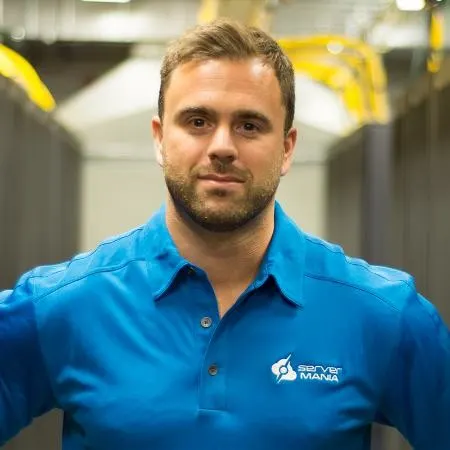Why More Web3 Projects Are Choosing Solana Infrastructure in 2025

The world of Web3 is changing rapidly, as decentralized networks and blockchain technology continue to prove themselves across various industries. In 2025, more companies are searching for infrastructure that can easily handle low-latency networking and high throughput for the unforgiving demands of the blockchain system.
Solana has emerged as a standout choice for businesses building decentralized applications (dApps) that require speed, scalability, and an ecosystem that supports innovation at every layer.
At ServerMania, we’ve helped countless organizations navigate this evolution by providing Dedicated Servers, specialized Blockchain Servers, and end-to-end Web3 Solutions. We offer anything from high-performance nodes to consulting on decentralized storage and private key management.
In this quick guide, we’re going to explore why more Web3 projects are choosing the Solana infrastructure in 2025, and how your team can start leveraging it.
Solana Ecosystem Growth: Why Choose Solana Blockchain?
In 2024, more than 2,000 Web3 projects switched to Solana, setting all the stunning headlines signaling about 300% year-over-year growth. This indicates an Ethereum-dominated environment, where all the organizations started to weigh the benefits of each platform against their specific infrastructure needs.
Today, Solana processes more daily transactions than Ethereum and all other multiple chains combined, which is a clear testament to its unmatched high throughput and low latency networking.
This influences critical decisions about computing power, storage, database management, access control, and how they affect the entire development process.
Choosing a blockchain platform is no longer just about smart contracts or a native token; it’s about finding the right blockchain infrastructure to support large volumes of data, allowing users to deploy Web3 projects on Solana with enhanced security.
The Solana Ecosystem In Numbers
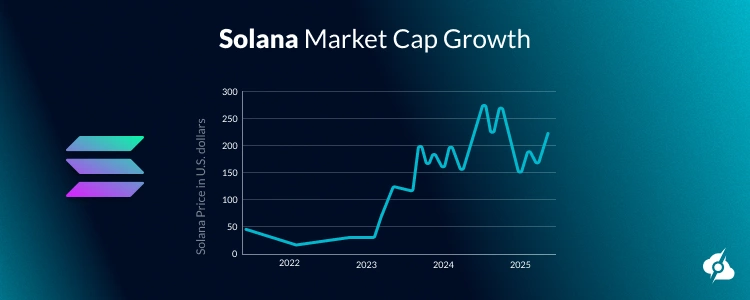
Source: Statista.com
Project Migration Statistics and Trends
The Solana ecosystem has exploded from around 500 active projects in 2022 to over 2,000 today, which is a groundbreaking signal that organizations are rethinking their blockchain applications.
Along with a growing number of projects, Solana’s native token continues to play a crucial role in transaction fees and network security.
Let’s take a quick look at some of the notable business migrations:
- Helium: Migrated 1 million+ IoT devices from a custom chain to Solana for scalability.
- DeGods / y00ts: Returned from Ethereum to Solana, attracted by the speed and cost.
- STEPN: Expanded from BNB Chain to Solana to leverage all its infrastructure features.
- Render Network: Migrating from Ethereum, prioritizing performance and efficiency.
Transaction Volume and Network Activity
Solana now outpaces Ethereum and all EVM chains combined in daily transactions, with:
- 65+ billion daily transactions processed
- 5.5 million average daily active addresses
- 99.9%+ transactions with a successful rate
These numbers underscore why infrastructure requirements differ dramatically across platforms as Solana’s demands call for high-performance nodes, substantial computing power, and reliable data storage to maintain this scale.
Developer Adoption and Community Growth
Solana’s vibrant community is a foundation of its growth:
- 3,000+ monthly active developers
- 200+ DeFi protocols with $4B+ TVL
- 50,000+ NFT collections
- 150+ blockchain-based games in development
- 30+ enterprise partnerships
This rich decentralized ecosystem provides developers with robust tools and frameworks, accelerating the development process for decentralized applications dApps.
Investment and Funding Patterns
Solana’s growth is backed by significant investment and broad adoption across sectors:
| Sector | Projects/Stats | Highlights |
|---|---|---|
| DeFi Protocols | 200+ projects, $4B+ TVL | Fast-growing liquidity pools |
| NFT Projects | 50,000+ collections | Diverse and active marketplaces |
| Gaming | 150+ games in development | Blockchain gaming innovation |
| Enterprise Solutions | 30+ major partnerships | Scalable, secure blockchain solutions |
The Technical Advantage: Why Solana?
The quick Solana adoption across the Web3 projects is not accidental, considering the ungodly amount of businesses switching to a different infrastructure. The main reason is the technical advantages that come with the revolutionary blockchain-based ecosystem and infrastructure.
Let’s go over the technical advantages first:
Technical Advantages: Speed and Reliability
One of the main benefits of the Solana technology is the scalability and robust security that comes with it. This makes the blockchain network ideal for both demanding dApps and traditional web applications.
Some of them include:
- Proof of History Consensus: The proof of stake mechanism allows parallel transaction processing that is widely required, through the Sealevel runtime, which in turn, increases the throughput.
- Sustained High Throughput: Enabling transactions from 4,000, up to 5,000 per second, which is an outstanding phenomenon in the world of production.
- Provides Single Global State: This completely eliminates the need for sharding, which simplifies the network and avoids cross-shard communication delays.
- Offers Sub-Second Finality: The blocks can easily finalize in roughly 400 milliseconds, allowing all the real-time applications to function extra fast.
- Has Predictable Fee Markets: Localized fees prevent unexpected spikes caused by network congestion, aiding cost planning.
Developer Benefits: Smart Contracts and Tooling
Solana prioritizes developers, offering unique features and a robust suite of next-generation productivity tools and tweaks that improve the central authority of the infrastructure.
Here’s the developer’s advantages:
- Multi-Language Support: Solana offers programming in various languages, including Rust, C, and C++ to match different requirements and preferences.
- In-Depth Documentation: This infrastructure offers many detailed guides and examples to help with the onboarding and orientation.
- Optimized Framework: It reduces the development time by up to 70%, which accelerates smart contract creation and their deployment delay.
- Integrated Testing Tools: The built-in testing environments enable developers to swiftly identify and resolve issues in their early development.
- Robust Infrastructure: Mature RPC providers and analytics support smooth application monitoring and scaling.
Network Effects: Access Control & Security
The growing Solana decentralized ecosystem is built on an open protocol, fueling powerful network effects that benefit all participants. Important network advantages include:
- Atomic Composability: This open design reduces reliance on any single central authority, allowing programs and apps to communicate quickly and seamlessly.
- Shared Liquidity: The decentralized exchanges and protocols pool resources to assist user experience and boost productivity.
- Large User Base: A broad spectrum of over 100 million wallets has been generated, which offers a vast audience for new applications.
- Proven Infrastructure: Indexers, analytics, and RPC providers facilitate efficient development and data access.
- Interconnected Ecosystem: This enables faster innovation through collaboration across multiple projects and sectors.
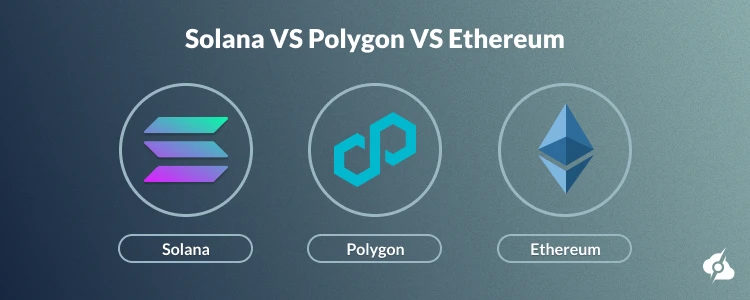
Solana Infrastructure Requirements Vs. Other Networks
Solana’s architecture is more powerful when compared to other blockchain technologies, and validator nodes require 24+ CPU cores, 512GB RAM, and 10Gbps network connections.
Blockchain Hardware Comparison
Here’s how Solana requirements stack up against other architectures:
| Solana | Ethereum | Cosmos | Polygon | |
|---|---|---|---|---|
| CPU Cores | 24+ | 4-8 | 4-8 | 8-16 |
| RAM | 512GB | 16-32GB | 16GB | 32GB |
| Storage Growth | 1TB/month | 10GB/month | 50GB/month | 100GB/month |
| Bandwidth | 10Gbps | 1Gbps | 1Gbps | 1Gbps |
Network Requirements
Solana’s high-speed transaction processing creates heavy demands on network performance and reliability:
- Bandwidth Usage: The Solana node validators need approximately between 5 and 10 terabytes of data monthly to process and function normally.
- Latency Sensitivity: With Solana validator, you need to maintain latency below 50 milliseconds in order to ensure fast block propagation and network consensus.
- DDoS Protection: The critical role of validators requires ultimate defense against DDoS attacks so they can maintain stable and reliable.
- Redundancy Needs: Establishing validators across different geographic locations helps you with prevention of downtime, outages, and single points of failure.
See Also: ServerMania Launches 25, 50 & 100 Gbps Unmetered Dedicated Servers
Storage Challenges
Managing Solana’s fast-growing blockchain data requires scalable and high-performance storage solutions:
- Growth Rate: Full nodes see their data grow by more than 1 terabyte every month as new transactions are continuously recorded.
- IOPS Requirements: Storage hardware needs to handle upwards of 500,000 read operations per second to keep data retrieval swift during validation.
- Snapshot Management: Regular cleanup of blockchain snapshots is required to keep storage demands manageable and nodes running efficiently.
- Archive Nodes: Nodes that keep a complete record of the blockchain’s history require over 50 terabytes of storage capacity, and that number keeps rising.
Data Center Implications
Running Solana validators requires a data center design with high power, cooling, network quality, solutions, and tools such as:
- Power Density: Each Solana validator node requires around or more than 500 watts, which is much higher when compared to a standard hosting server.
- Cooling Requirements: With Solana validator, you require much more efficient cooling, considering that the more power the server uses, the more heat is generated.
- Network Quality: Solana infrastructure requires top-tier internet connections in order to meet the demanding bandwidth and low-latency requirements.
- Geographic Strategy: Validators must be positioned close enough to reduce latency but also distributed to ensure network reliability and fault tolerance.
Explore: ServerMania Global Data Center Locations
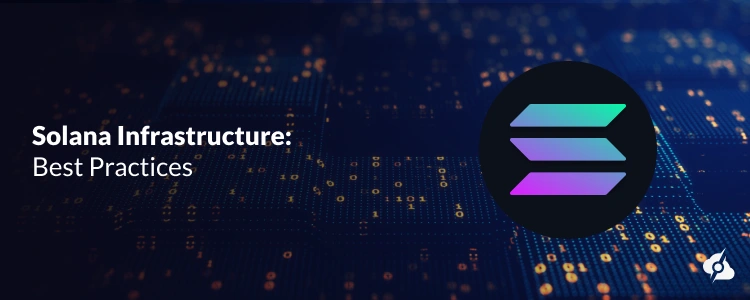
Solana Infrastructure: Best Practices
To create and maintain an infrastructure for Solana Web3 projects, besides raw power, you also need a consider many other factors such as scaling, growth, unexpected events, and design. So, we’re going to walk you through the best practices you should deploy to create a stable and future-proof architecture.
- Architecture Design Patterns
The effective architecture is founded on a groundwork for high performance and resilience across your Solana deployments. Some of them include:
- RPC Load Balancing: You need to distribute the client requests across multiple RPC nodes, in order to prevent overload and ensure consistent response times.
- Geographic Distribution: When deploying nodes in multiple regions, you ultimately reduce latency for your global users and reduce potential localized failures.
- Caching Layers: By integrating caching systems near the RPC endpoints, you will minimize repetitive queries and ease load on primary nodes.
- Dedicated Validators: By running validators separately from RPC infrastructure, you will avoid resource contention and improve block production stability.
Pro Tip: To ensure system robustness, avoid a single point of failure by distributing nodes and balancing RPC loads across multiple locations.
- Scaling Strategies for Growth
As projects on Solana expand, infrastructure must keep up. Hence, a combination of horizontal and vertical scaling is critical, so let’s go through the essentials:
- Horizontal Scaling: You can easily add more RPC nodes to handle increased API traffic as user bases grow, allowing you to scale effectively.
- Vertical Scaling: Don’t hesitate to upgrade your validator hardware with more CPU cores and RAM to support Solana’s parallel processing demands.
- CDN Integration: By using Content Delivery Networks (CDN), you will cache the static resources, which will improve load times and offload edge requests.
- Database Optimization: Last but not least, you need proper indexing and query tuning to ensure databases supporting decentralized applications dApps or analytics stay responsive.
- Monitoring and Performance Management
In order to keep your Solana infrastructure healthy, you’ll need to deploy robust monitoring and proactive tuning, including:
- CPU Affinity: Pin validator processes to dedicated cores for predictable performance and reduced context switching.
- Memory Management: Configure huge pages to boost memory handling efficiency, reducing latency for validator operations.
- Network Tuning: Fine-tune TCP parameters to maximize throughput and minimize packet loss on high-speed links.
- Storage Strategy: Use NVMe drives in RAID setups to achieve the IOPS levels Solana validators demand.
- Disaster Recovery Planning
Even the best hardware and software setups need a solid plan for unexpected disruptions:
- Metrics Collection: Leverage tools like Prometheus and Grafana to continuously track system health and detect anomalies early.
- Log Aggregation: Centralize logs with stacks like ELK to speed up troubleshooting across multiple nodes and services.
- Alerting: By integrating platforms such as PagerDuty, you will ultimately ensure critical issues get rapid attention.
- Performance Tracking: Build custom dashboards that visualize validator and RPC metrics, helping teams react before small issues become outages.
See Also: How to Host a Solana Validator Node: Hardware Requirements and Setup Guide
Summary
Solana’s unique infrastructure demands advanced solutions that keep pace with Web3’s growth. At ServerMania, our Blockchain Servers and Web3 Solutions are built to support these requirements, empowering developers and businesses alike.
Choose a solution and get started today with a free consultation from ServerMania support experts!
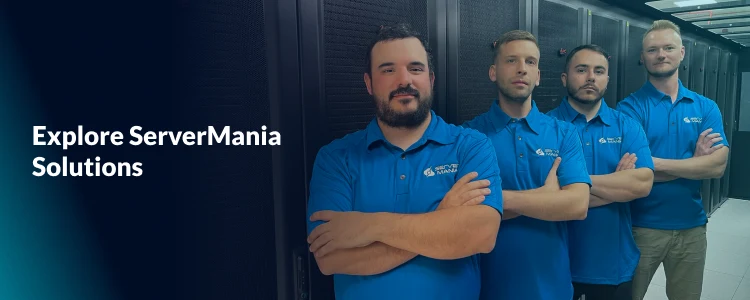
Solana Infrastructure FAQ
What makes Solana better than different blockchains in 2025?
Solana stands out among blockchain networks in 2025 due to its ability to handle massive volumes of blockchain data with low latency and high throughput. The unique Solana architecture supports the scalability for decentralized applications dApps and smart contracts, enabling organizations to build and manage fast, secure, and efficient blockchain infrastructure.
This makes Solana a preferred choice for businesses looking to manage blockchain data and support growing user bases securely.
How does Solana’s architecture compare to other blockchain networks?
Solana’s architecture is designed to process rapidly by using advanced technology like Proof of History, which reduces delays common in other decentralized networks.
Compared to traditional blockchain infrastructures, Solana needs more powerful hardware and network capabilities but delivers significantly better performance, enabling real-time access and data storage without compromising security or decentralization.
What tools are available for developers building on Solana technology?
Developers building decentralized applications on Solana have access to a rich ecosystem of tools that support smart contract creation, testing, and deployment.
This includes multi-language programming frameworks, integrated testing environments, and extensive documentation that simplifies managing blockchain data and system security. These tools enable developers to create and access scalable and secure decentralized applications dApps efficiently.
How can businesses use Solana’s infrastructure for Web3 projects?
Businesses can utilize Solana’s robust decentralized infrastructure to build and support decentralized applications that require fast speeds and reliable security.
By utilizing Solana’s network, organizations can manage blockchain data effectively, enable seamless user access, and integrate with other decentralized networks to create innovative Web3 solutions that outshine different blockchain networks.
Was this page helpful?

